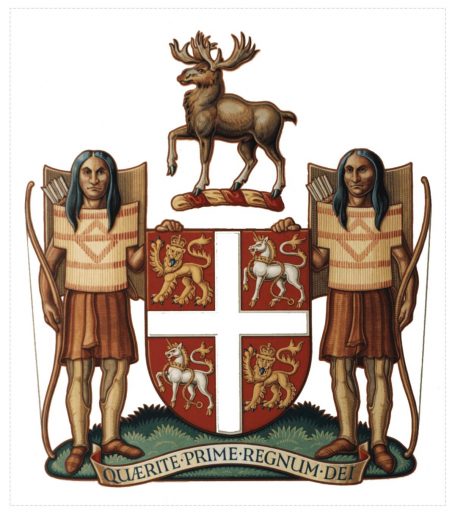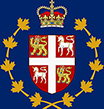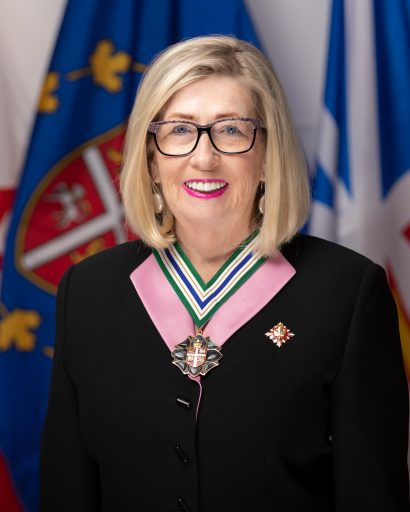The Coat of Arms was granted by Royal Warrant of H.M. King Charles I of England, January 1, 1637.
 Following the original grant of arms, their existence was forgotten until the 1920s when inquiries by the Imperial War Graves Commission caused their rediscovery and a recertification of the original grant by the Garter King of Arms on February 18, 1925. On January 1, 1928 they were officially readopted by the Government of Newfoundland.
Following the original grant of arms, their existence was forgotten until the 1920s when inquiries by the Imperial War Graves Commission caused their rediscovery and a recertification of the original grant by the Garter King of Arms on February 18, 1925. On January 1, 1928 they were officially readopted by the Government of Newfoundland.
Blazon
Arms
Gules a cross Argent between in the first and fourth quarters a lion passant guardant wearing the Royal Crown Or and in the second and third quarters a unicorn passant Argent armed, crined, unguled and gorged with a coronet of crosses patté and fleurs-de-lis to which is attached a chain passing between its forelegs and reflexed over its back Or;
Crest
An elk passant proper;
Supporters
Two aboriginals armed and apparelled for war standing on a grassy mount proper;
Motto
QUÆRITE PRIME REGNUM DEI;
Symbolism
Arms
The crowned lions and unicorns have been the supporters of the Royal Arms of England and Scotland since 1603.
Crest
The “elk” represents the wildlife of Newfoundland and Labrador.
Supporters
These represent Newfoundland’s native Beothuk people.
Motto
Meaning “Seek ye first the Kingdom of God”, this Latin phrase is taken from Matthew 6:33.



